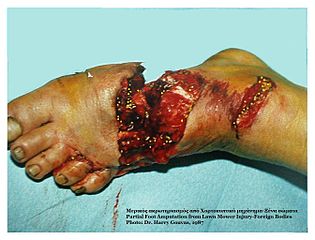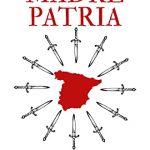
Contents
Terror on ships, punishment or amputation
The harsh and cruel discipline on the warships and the fierce filibusters. Sometimes amputations were the only solution to avoid death.The medicine of the time was very limited.
Amputations were sometimes the alternative to death. Antibiotics did not exist. to fight possible infections from within.
Discipline and Surgery
Life on merchant and pirate ships was hard and dangerous.
Having a group of men cooped up in a small space, unable to go ashore sometimes for weeks at a time, was a problem. Rivalries, differences of coexistence, competing for sleeping space and even for some of the meals caused continuous arguments.
Surgeon or Butcher?
Faced with wounds and the fear of gangrene, the ship’s doctor performed painful amputations.
It was quite a butchery, but it was done because it was the only thing that saved lives. Moreover, on many ships it was the barber who, in addition to extracting teeth and molars, performed the amputations.
The barber acted as a doctor or healer and did not hesitate to amputate.
Death or Amputation
To be left without an eye, arm or leg, in exchange for continuing to live.
Few survived amputations, it was very easy for the wounds to become infected. The lack of medical alternatives made them unavoidable. The choice between life or a life of total dependency and misery was the decision they had to make.
The horror of amputation
Antibiotics did not exist and gangrene could spread.
Any infection could lead to death. A wound from a stab wound or an accident on the ship, combined with the filth on board, could leave you without an arm or a leg or even your life.
Drinking water could only be used for drinking. If they wanted to wash themselves, something that many did not crave, it had to be with salt water. This resulted in dry skin and discomfort in the medium and long term.
The Surgeon, almost a Butcher
But he saved lives by amputations
The instruments for amputation or pruning as the sailors from more rural areas called them ranged from scalpels, knives, scissors to saws.
At that time the instruments were not disinfected and were used as needed by the surgeon. Sometimes from one operation to another they were simply cleaned quickly to remove the pieces of flesh stuck to them.
And at most the blood was wiped off the instruments, if they were soiled, so that they would not slip into the surgeon’s hands.
The danger of boarding
The pirates lived only a few years because the risk of boarding a ship was so great. In each boarding, some were wounded or killed. Sometimes from gun, musket, sword or knife wounds. Others from blows and falls when they were thrown from the top of the ladders or sails. The landing was not always soft. Other times they did not reach the other ship in one piece because they had been stabbed or shot with a pistol or musket.
If the ship came to defend itself, a single cannon shot falling on the deck could cause certain splinters of wood to be hurled at them as deadly projectiles.
Even if this did not happen during the boarding, when they jumped from one ship to the other, they were exposed. A group of sharpshooters stationed in the quarterdeck or on the top of the sails could be very dangerous.
Amputation was common on warships.
And it was practically the way of life on many occasions.
As a table for the surgeon, they used to use a large one, where the sailors usually ate. A large space where the sick person could lie down and be held by several men. The pain was enormous and it was very difficult to hold him.
It was usually located in a safer area of the ship. On large warships, the helm area of the Sollado was used. As it was above the hold of the ship, it usually had no windows or ventilation, so it was dark and suffocating. A lantern was used as light.
A thrilling spectacle after the battles
The scene was like a real horror movie. A dark place, almost without light, full of shadows, without ventilation, suffocating and hot.
Screams of the patients who were being amputated, one after the other. Moans of the wounded waiting in line for their turn and seeing what awaited them.
The floor full of blood that the spilled sand and the tarpaulins that covered it could barely soak. Buckets full of bullet-riddled limbs and mutilated bombs were the best sign of what had happened.
The last, but very feared solution
The horror spread with the painful amputations and without anesthesia as it was unknown at the time. At most, they were given, a few drinks of rum or brandy, to leave the patient a little bewildered.
Most of them did not manage to survive. Therefore, surgeons performed them only as a last resort. Others preferred to risk death, trying to avoid the future life of misery that awaited them as a mutilated person in such a violent world.
Punishment of Sailors and Pirates
Heartbreaking whippings
Rigid and cruel discipline
Punishment by whipping was common on ships and the multi-headed whip multiplied the punishment. A very frequent punishment among pirates and navies
The dreaded tearing of the whip
And marks on the skin that would last in many cases for life.
For the Pirates, some punishments could mean death.
Flogging and the cat of 8 tails
Flogging was a frequent occurrence and usually a dozen. This number of floggings left the skin shredded. A greater amount could cause death.
On many occasions it was carried out with a whip made of a stripped rope, the strands of which were full of knots. In the English navy it was called the cat of eight tails.
When the punishment was to be exemplary, the sailor was whipped on every ship in the fleet. This, if only because of the number of lashes received, resulted in death.
Under the keel
A widespread custom was to pass a rope from one side of the ship to the other under the water. The pirate or sailor was tied to one end of this rope. After throwing him into the water, he was pulled from the other end of the rope.
This meant that the punished person had to pass under the ship submerged until he reached the other side and could breathe.
There was a good chance that he would drown along the way. Even if this did not happen, the skin would end up destroyed because the keel of the ship usually had a multitude of mollusks whose shells would tear.
If he was also tied up, the blows with the keel could be brutal. There was also the possibility of getting hooked.
Without rum it was not the same
It was the usual drink if there was no beer.
Drinking and smoking a pipe was entertainment.
In order for the sailors to endure the harsh conditions of life at sea, alcohol was given to them.
A ration was usually given at lunchtime at 12 o’clock and another at dinnertime at 5 o’clock in the afternoon,
Since the water was almost undrinkable after a while, its taste was disguised by adding some alcohol. On English ships, the so-called Grogg used to be served. This drink consisted of a ration of rum diluted in 4 parts of water. This prevented great drunkenness.
It used to be given a ration at lunchtime at 12 o’clock and another at dinner time at 5 o’clock in the afternoon,
No Rum or Tobacco
In the case of a minor offense, it was normal to punish without Rum and Tobacco, which was a bigger punishment than it may seem. These two products were the relief of the sailors and pirates.
In the English warships these products were not distributed to the sick of the ship. In view of this, many sailors avoided going to the infirmary and going without their ration.
English and French customs
All were brutal but some were more so
Brutality was not the patrimony of any particular nation, the navies of all countries were brutal. It was a way of maintaining order in a crew that continually risked their lives and in many cases were on the ship against their will.
However, since most of the pirates came from England and France, some of the customs of these countries predominated.
The Grogg drink was English, it was put into practice for the first time by the English Admiral Vermont to prevent the sailors of the warships from being drunk. For this purpose, he distributed rum diluted in water.
The brutality of the punishments on the English ships was famous in order to maintain order and prevent them from deserting.
Such was the fear they had of desertions, that although the English won the battle of Trafalgar against the Franco-Spanish combination, for many months they were not allowed to disembark.


